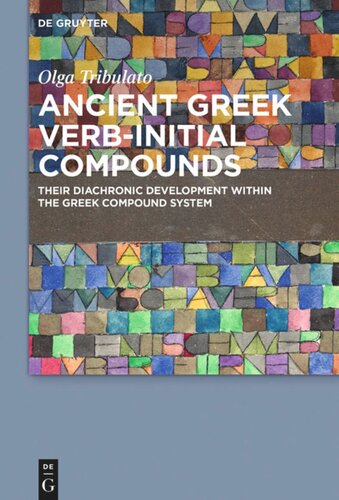

Most ebook files are in PDF format, so you can easily read them using various software such as Foxit Reader or directly on the Google Chrome browser.
Some ebook files are released by publishers in other formats such as .awz, .mobi, .epub, .fb2, etc. You may need to install specific software to read these formats on mobile/PC, such as Calibre.
Please read the tutorial at this link: https://ebookbell.com/faq
We offer FREE conversion to the popular formats you request; however, this may take some time. Therefore, right after payment, please email us, and we will try to provide the service as quickly as possible.
For some exceptional file formats or broken links (if any), please refrain from opening any disputes. Instead, email us first, and we will try to assist within a maximum of 6 hours.
EbookBell Team

5.0
98 reviewsThis book provides a brand new treatment of Ancient Greek (AG) verb-first (V1) compounds. In AG, the very existence of this type is surprising: its left-oriented structure goes against the right-oriented structure of the compound system, in which there also exists a large class of verb-final (V2) compounds (many of which express the same agentive semantics). While past studies have privileged either the historical dimension or the assessment of semantic and stylistic issues over a systematic analysis of V1 compounds, this book provides a comprehensive corpus of appellative and onomastic forms, which are studied vis-à-vis V2 ones. The diachronic dimension (how these compounds developed from late PIE to AG and then within AG) is combined with the synchronic one (how they are used in specific contexts) in order to show that, far from being anomalous, V1 compounds fill lexical gaps that could not, for specified morphological and semantic reasons, be filled by more ‘regular’ V2 ones. Introductory chapters on compounding in morphological theory and in AG place the multi-faceted approach of this book in a modern perspective, highlighting the importance of AG for linguists debating the properties of the V1 type cross-linguistically.